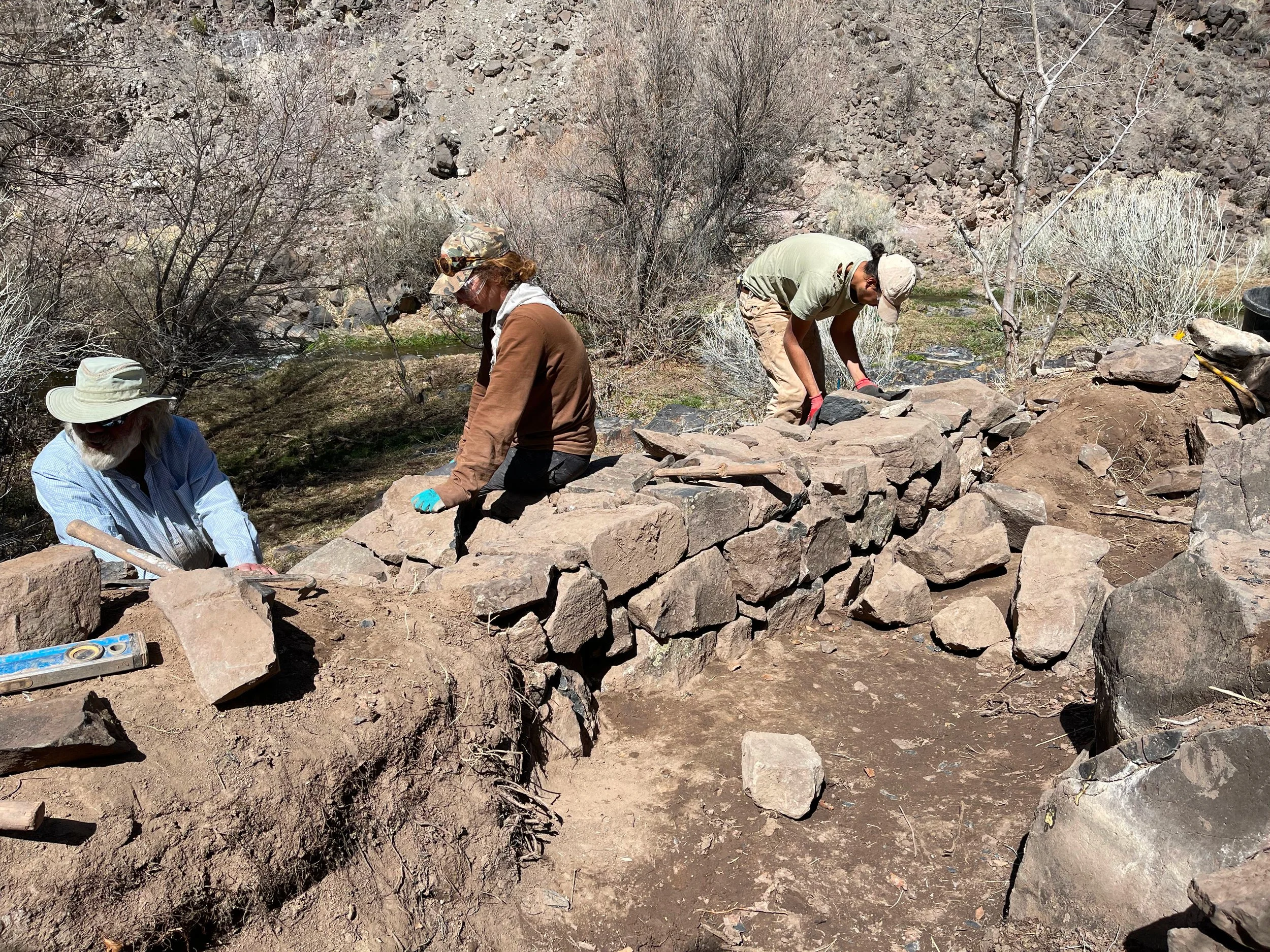Rael Ranch
Just outside La Cienega, a village downstream from Santa Fe, the historic ranch house of the Rael family has been a focus of preservation and documentation work of Cornerstones for several years now. The Raels lived on the ranch for centuries; a sign at the driveways dates them and the acequia to 1718. One and a half miles long, the Rael Acequia has been upkept for lifetimes, and Cornerstones now leads the annual cleaning and stone masonry repairs to sustain it for the next century.
This year, we began springtime acequia work on March 1, 2022, and we worked on Rael Ranch throughout the year thereafter. Cornerstones Project Manager, Issac Logsdon, along with interns, Lea Andersson, Ruben Kimmelman, and Kateri Lopez, began La Limpia on that first day of March, and worked the duration of the season. This ritual of communally cleaning out the acequia often starts our work season at the Ranch.
Our team was joined by stonemason Alan Ash on March 16 to lead them through stone masonry to repair walls within the acequia.The video and photos below show the slow but skillful work that goes into building up the ditch. This work substitutes decades of sand bags and plastic wraps that formerly held together much of the bank but over time deteriorated and is hard to repair.
After repairs, we reopened the acequia on April 11 and then worked downstream on the pond spillway, hillside ditch, and the laterals that irrigate the main field. The North-South field laterals were in use at Rael as late as 2004 when Alonzo Rael died. In the time since then, erosion and neglect mostly erased the presence of these waterways. Lateral ditches function to move water in a controlled manner, making it possible to irrigate sections of the field as needed. As the acequia runs over a mile, much can happen to it that requires attention.
For example, in mid-May, water levels downstream (at the field) were below expected flow indicating a major leak or blockage upstream. Upon inspection, we found that an 8’’ diameter plastic pipe was clogged with algae and other organic debris, causing water to overflow. Had the pipe continued to clog, the overflow would have caused severe damage to the already vulnerable bank. The pipe was removed and replaced with plastic liner as a temporary fix until a proper rebuild of the bank can occur.This pipe was originally installed by BLM several years ago, but was an unsympathetic preservation treatment and did not function well. Also, June storms also brought down a large Russian Olive (Elaeagnus angustifolia) tree which blocked the path upstream. The tree was cut into sections using an electric chainsaw, hand saws, and loppers, then cleared and piled away from the ditch.





